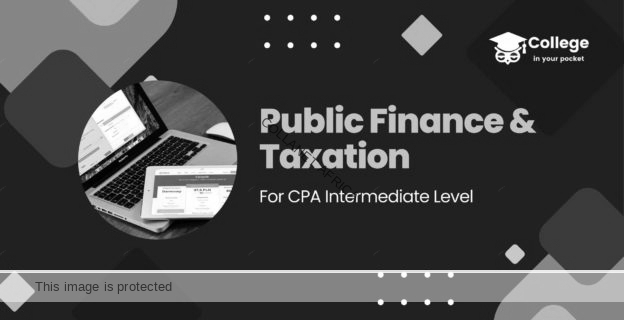This paper is intended to equip the candidate with knowledge, skills and attitudes that will enable him/her to apply public financial management principles, implement public financial management regulations at middle management levels and to prepare non-complex tax computations for individuals and corporates.
Learning Outcomes
A candidate who passes this paper should be able to:
- Apply public financial management requirements in practice in non-complex environments
in both the public and private sectors - Compute taxes for various individuals and entities
- Apply the written taxation laws in addressing various tax issues
- File tax returns
- Undertake non-complex tax reviews.
Download Notes
Public Finance & Taxation Notes
Course Syllabus
- Introduction to Public Financial Management
- Nature and scope of public finance
- Sources of public finance
- Objectives of the Public Financial Management Act and Financial regulations
- Budget process for national, county and public entities, Development plan preparation, Treasury circulars, Cash flow projections, Budget estimates and revenue raising measures.
- Role of the National Treasury and County Treasuries with respect to the management and control of public finance.
- Relationship between National and County Governments on budget and economic matters
- The process of sharing revenue between national and county governments and among the county governments: Factors considered and formula used
- Division of revenue bill and county allocation of revenue bill
- The role of the Commission on Revenue on Allocation (COR)
- The role of the Council of Governors in county financial management
- National Government public funds: The Consolidated Fund; The Contingency fund; The Equalisation fund and Other National Government public funds
- County Government public funds; County Revenue Fund; County Government Emergency Funds and other county public funds
- County government revenue sources.
- Oversight Function in Public Finance Management
- The role of National Assembly: Responsibilities of the National Assembly budget committee in public finance matters
- The role of Senate: Responsibilities of the Senate budget committee in public finance matters
- The role of Parliamentary Budget Office
- The role of Auditor General
- The role of Internal Audit
- Role of Controller of Budget
- The role of public sector accounting standards board
- Procurement in public entities
- Introduction to Public Procurement and Disposal (PPD) Act
- Procurement guidelines as envisaged by PPD Act
- Procurement process by National, County and other public entities: The role of the National Treasury, Public Procurement Regulatory Authority and Public Procurement Administrative Review Board
- Tendering process and selection of suppliers in public sector
- Concept of e-procurement
- Public Private Partnerships Arrangements
- Rationale and justification for Public Private Partnerships
- Establishment of Public Private Partnerships (PPP) Unit in the National Treasury
- Contract/project agreements, guidelines and standards
- Composition and role of PPP petition committee
- Establishment and role of PPP project facilitation fund
- Public Debt Management
- Establishment of debt management office
- Objectives of debt management in public sector
- Sources of public debt in Kenya
- Management of debts by county governments and other public entities
- Role of the Cabinet Secretary of the National Treasury in public debt management
- Measures that can be adopted to reduce public debt
- Introduction to Taxation
- Definition of Tax, Taxation and Types of taxes in Kenya
- History of taxation
- Classification of taxes; Tax shifting and Factors that determine tax shifting
- Principles of an optimal tax system
- Types of tax systems; Single versus multiple tax systems
- Purposes of taxation/Why the government levy taxes
- Tax evasion and tax avoidance
- Taxable capacity
- Budgetary and Fiscal policies
- The Revenue Authority; Structure, Functions, Large and Medium Taxpayers Office mandate
- Taxation of Income
- Introduction
- Basis of charging tax in Kenya: Section 3 of the Income Tax Act
- Concept of residency and Criteria of taxing income in Kenya.
- Taxable and non-taxable persons
- Specified Sources of income
- Incomes exempted from taxation
- Taxation of Employment income
- Taxable cash and non-cash benefits/rewards received from employment
- Non-taxable cash and non-cash benefits/rewards received from employment
- Allowable deductions against employment income
- Tax credits (withholding tax, personal and insurance relief, others)
- Taxation of lumpsum payment for services rendered and services that would have been rendered; Gratuity, terminal dues, compensation for loss of office.
- Operations of PAYE systems: Preparation of PAYE returns, categories of employees, multiple sources of income, irregularly paid employees, casual workers, PAYE audit and triggers
- Other Statutory deductions (NSSF and NHIF)
- All these should be illustrated with relevant computations including PAYE computations
- Taxation of Business Income
- Introduction to taxation of business income including criteria of taxing business income
- Income Tax Act provisions on computation of business income
- Allowable and disallowable business expenses and taxable business income
- Taxable business income and tax payable computations in respect of:
- Sole proprietorship
- Partnerships (excluding admissions, retirement of partners and conversions)
- Incorporated entities (excluding specialised institutions)
- Taxation of rental income and royalties
- Taxation of Farming income
- Taxation of Investment income (Dividend and interest income)
- Turnover tax and Minimal tax
- Taxation of Capital gains
- Taxation of Digital income; digital service tax and Digital service tax agents
- Withholding Tax
- Income subject to withholding tax (Dividends, Interest, management and profession fees, royalties)
- Withholding Tax Rates on Residents and non-residents
- Introduction to Double Tax Agreements and the impact on withholding tax payments (should be illustrated with relevant basic computations).
- Introduction
- Investment Allowances/deductions
- Introduction to capital allowances and Rationale for capital deductions
- Types of capital allowances; Theory and computations
- Investment deductions; Ordinary manufacturers
- Industrial building deductions
- Wear and tear allowances
- Farm works deductions
- Shipping investment deduction
- Other deductions (should be illustrated with relevant computations)
- Administration of Income Tax and Tax Procedures
- Registration and deregistration of tax payers
- Personal identification number: Issue, uses, cancellation of a PIN
- Taxpayer's tax representative: Appointment, liabilities and obligations
- Tax Returns and Assessments: Self-assessment, Default assessment, Advance assessment, Amendment of assessments
- Collection, recovery and refund of taxes
- Tax Decisions, Objections, Appeals and Relief of mistakes
- Voluntary Tax Disclosure Program
- Administrative penalties and offences
- Application of ICT in taxation: Practical use of iTax to file the returns
- Administration of Value Added Tax (VAT)
- Introduction to VAT, Basis of charging VAT and VAT rates
- Rights and obligations of VAT taxable person
- Registration and deregistration of businesses for VAT
- Key terms in VAT: Input tax, Output tax, Supply, Time of supply/Tax point and Taxable value of a supply/Value for VAT supported with relevant calculations
- Deduction of input tax
- Accounting for VAT and VAT records
- Taxable and non-taxable supplies: Zero rated supplies, Exempt goods and exempt services including restriction of input tax claim.
- Privileged persons and institutions
- Withholding VAT and withholding VAT agents
- VAT returns and assessments including VAT Auto Assessments
- Remission, rebate and refund of VAT
- Changes to be notified to the commissioner
- Offences, fines, penalties and interest
- Customs Taxes and Excise Taxes
- Purpose of customs and excise duties
- Imposition of customs duty
- Customs procedure
- Bonded warehouse and bond securities
- Goods subject to customs control
- Refund of duty
- The Simba System/Integrated Customs Management System
- Imposition of excise duty
- Excisable goods under excise control
- Application for excise duty (licensing), issue of licences, Suspension and Cancellation of Licences
- Excise stamps and Excisable goods management system
- Refund of excise duty
- Excise duty returns and payments
- Offences and penalties
- Miscellaneous fees and levies
- Export levy
- Import Declaration fee (IDF)
- Railway Development Levy (RDL)
- Stamp duty
- Catering levy
- Motor vehicle advance tax
- Betting, Lotteries & Gaming taxes
Sample reading and reference material
- NCLR (2009). Laws of Kenya: East African Community Customs Management Act, 2004.
- NCLR (2017). Laws of Kenya: Excise Duty Act No. 23 Of 2015
- NCLR (2018). Laws of Kenya: Income Tax Act
- NCLR (2012). Laws of Kenya: The Public Finance Management Act
- NCLR (2018). Laws of Kenya: Tax Procedures Act of 2015
- NCLR (2018). Laws of Kenya: Value Added Tax Act of 2013
- KASNEB e-learning resources (link on the KASNEB website).
- KASNEB approved study packs.
- Sample text books by local authors
Unit Content

Login
Accessing this unit requires a login. Please enter your credentials below!



